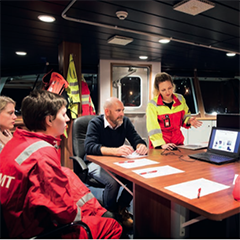PES caught up with Nils Ingvarson, the CCO at MMT. He was happy to tell us about increased revenue, new clients and improved efficiency leading to cost savings. The company has a lot of experience in the oil and gas industry and intends to bring photogrammetry to the offshore wind sector.
PES: Hi Nils, welcome back to PES Wind, it’s good to talk with you again. Please could you bring us up to date with any changes since we last spoke with Per-Oof Sverlinger, not long after he took over as CEO?
Nils Ingvarson: We are continuing on the set plan and aiming to make even more adjustments to ensure the organisation is fit for purpose in the current market. So far, this seems to be working well.
In 2018 we had a revenue increase of around 300 MSEK and we have been working for new major clients in the industry.
PES: Has there been any subsequent change in your offers to the offshore wind industry?
NI: We have won more contracts for surveys with 2D and 3D ultra-high-resolution (UHR) seismic equipment, which is very positive for us. The data we collect is very useful and the requirement for data processing is high spec, so this suits us well.
PES: How have your surveys changed over the years, what new technology is available and what difference has this made to the end user?
NI: Our current survey operations are continuously improving. For example, the Round 3 wind farms in the UK are in the main further offshore and require larger vessels, which very much suits our current fleet operating in this area.
We have several on-going development projects, especially for monitoring during the operation phase of the windfarms. We are looking in to bringing in the techniques of photogrammetry, which we developed for the oil and gas industry. Considerable costs have been saved, by using much higher quality data to improve engineering efficiency.
This methodology would also be useful in renewables, for saving costs on structure inspections. We are also preparing Autonomous Underwater Vehicle (AUV) and ASV solutions, which will also be suitable for the renewables industry, too.




























